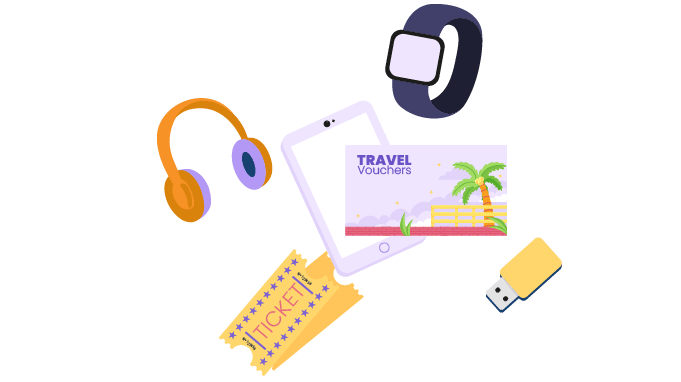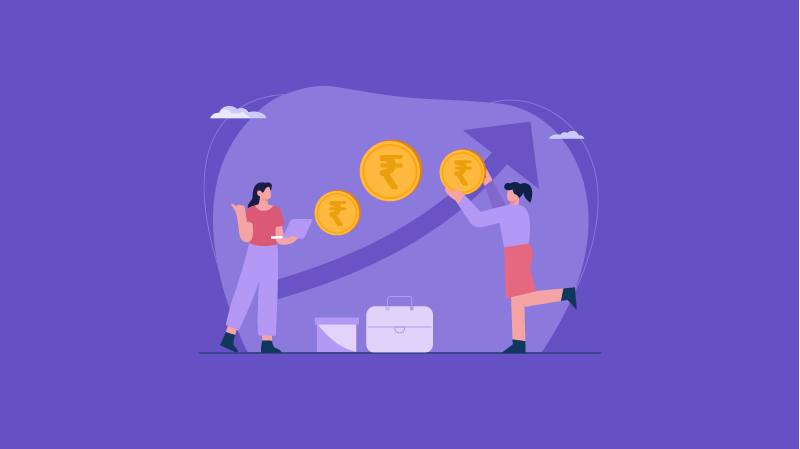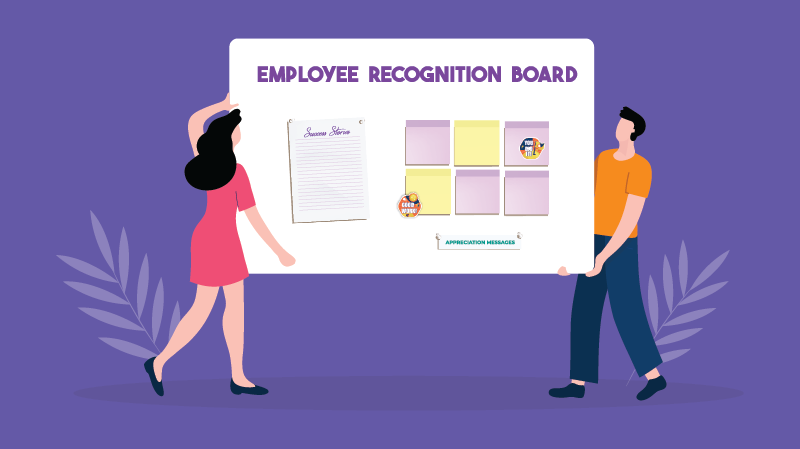All You Need To Know About Sales Incentive Programs In 2024
When it comes to sales incentive programs the first thought in your mind is monetary incentives. However, that is not all there is to incentive programs. Let’s find out more about sales incentive programs and how to design and implement them to benefit your organization.
What Is A Sales Incentive Program?

Sales incentive programs are systems developed by businesses to compensate salespersons for achieving certain specific goals. These rewards can be monetary or non-monetary, depending on the incentive program structure. These incentives and rewards motivate the sales team to reach their targets and strive for greater success.
Evolution Of Sales Incentive Programs

Sales incentive programs have undergone quite a change since their inception. As millenials continue to replace boomers in leadership positions this evolution is likely to continue.
Let us look at some of the evolution that sales incentive programs have undergone.
-
Traditional: Finding your ideal audience ment cold calls, scouting directories, attending conferences and knocking door to door in every office building
Modern: Today's audience for B2B buyers can be found online and on social platforms. Linkedin alone has over 800 million users which gives several leads for target buyers with the use of specific filters. -
Traditional: Engaging prospects included phone calls, e-mails and scheduled calls.
Modern: Liking and commenting on a prospects social posts is what engagement has evolved to. -
Traditional: In-person meetings were the ways to connect which involved a lot of hours and often traveling.
Modern: Digitizing has made connecting easier as technology has made it possible to connect with prospects for long-term relationship and decision-making much more accessible and practical. -
Traditional: Roles of sales representatives encompassed severalfields from onboarding clients to closing the sale
Modern: Sales representatives have more specific roles and often handle only parts of the sale process. -
Traditional: Incentivisation was mainly based on quantifiable results.
Modern: Incentivisation is a part of the sales process. Especially if it is a long sales cycle
5 Types Of Sales Incentives

Sales incentives need to be customized for every member of the team. Business objectivesare the specific measurable outcomes that companies want to maintain as their organization grows. They are a good indicator on which to base sales incentives. Following are a few role-specific examples to motivate sales representatives.
Role Specific
Every role has different objectives. For example, a sales representative focusing on market surveys will have different goals from those focusing on closing deals. Role-specific incentive programs will be more engaging for a team of such varied parts.
Territory-based
Sales are usually divided into territories. In such cases, territory-based incentivization is likely to be a good motivator. Instead of individual incentives, reps working in the same territory will get the same commission share.
This program has the benefit of creating a sense of social accountability for team members. It also tends to enhance teamwork which leads to greater engagement.
Presales
When selling enterprise software, incentives should be based on achieving smaller goals rather than finalizing sales. This keeps the employees motivated to stick through the long sales cycle while the customers mull over their choices.
These increments can be for successfully conducting a product demo or reaching out to potential buyers.
Omnichannel
An omnichannel or multi-channel approach to sales puts customers first, providing them with a smooth shopping experience. This is not confined to shopping online or offline from physical stores. It mainly focuses on integration between distribution, promotion, and communication channels on the back end.
Marketing using the omnichannel incentives approach may start with a sales rep and end with the customer buying something online. Incentives are given for completing omnichannel sales and tracking the final sale to the representative who first got the customer interested.
Analytics-based Target Setting
Analyzing every aspect of your organization is essential. Especially if it is for a fair distribution of incentives. Analytics help companies analyze sales rep behavior and their closing rate to define sales goals better.
How To Design And Apply The Right Sales Incentive Program To Your Business?

Design
Build an incentive planning team- to build an incentive planning team for your company, consider the following steps:
-
Build an incentive planning team: Who needs to be involved in the incentive plan? Senior management, HR, and other relevant departments must be responsible for managing and carrying out the plan.
-
Keep in mind the ABCs of sales incentives: Align with sales roles, Benchmark against industry pay data, and Construct to drive the right sales behaviors
-
Outline the purpose and goals of the incentive plan: specify which behaviors and results it is meant to promote.
-
Set a budget and provide the needed resources: for the incentive plan to be successful your team needs to be provided with the necessary tools and people to get the job done.
-
Develop a timeline and milestones: Create a timeline for implementing the incentive plan, including key milestones and deadlines. Make sure to use a timeline template that best fits your sales incentive program.
-
Select and train team members: Choose employees with the right skills and experience to create and carry out the incentive plan. Provide them with the training and support they need to succeed.
-
Review and adjust the plan regularly: Review it often and make changes if necessary to ensure it is still in line with the company's goals. Keep the plan as simple as possible.
To Apply
3 Understand what motivates each salesperson
A team is made up of different individuals with different personalities. When it comes to the sales team, only some reps will likely be the same. Which is why we need different approches to employee compensation. These differences can be categorized into three categories: Star or top performers, core performers, and laggers.
Motivating every type of sales rep is essential for an effective sales incentive program. Let's look at some handy tips to motivate different representatives.
Motivating star performers:
- Understand their Strength, weakness, and goals
- Keep the finance team in the loop
- Keep it simple and straightforward
Motivating Laggers:
- Use the bench program
- Use incentives as stepping stones
- Work with low performers
Motivating Core Performers:
- Offer training and coaching
- Multi-tier incentives
- Empowerment is the key
Mistakes To Be Avoided When Launching A Sales Incentive Program

1. Not taking team input.
When you are managing a team it is a given that you know what it takes to incentivize your team members. That said, it is not possible for one person to know everything. It would help if you considered your team's input as they are the ones being affected directly.
2. Only having one winner.
Suppose you only plan for benefits for the top performer. In that case, the other team members might feel demotivated as there is no point in giving their best because they will always fall short of the top spot.
Incentives programs that promote more than one winner enhance engagement and facilitate higher team collaboration. Resulting in a highly motivated team.
3. No updates after launching a plan
A motivating sales incentive plan needs to be a daily part of your team that is constantly upgraded to keep up with the changes in your strategy. Forbes suggests a daily update on the results.
Depending on your strategy, you can have either daily or periodic updates on the team's performance. This is necessary as not regularly updating your team will likely make them forget and be lax about putting in the effort.
4. One size fits all
There is no one-size-fits-all when it comes to any incentive plan, especially if it is a sales incentive plan. As we already discussed, there are 5 sales incentives and different ways to target star performers, laggers, and core performers. So it follows that there cannot be only one incentive that will satisfy all.
Different sales persons like different rewards, so customization is the way to go when using incentives to motivate your sales team.
5. Long term payoffs
People are easily attracted to quick wins. This holds true for salespersons as well. They like quick wins even if they are less rewarding. Sales by nature is not a very patient field. Hence, it is better to have several short-term goals throughout the year.
To provide your team with the best incentive plans, they need to be flexible to begin and end according to the goals achieved.
6. No variety in incentivization
Cash rewards are all good, but they become impersonal and boring over a longer period. Non-cash rewards such as free vacations, experiences, and merchandise are more valuable as they tend to leave a lasting impression on the receiver.
Every salesperson is different, and the incentives that push them to give their best vary. Taking the easy way out and going for cash-only rewards is not as effective long-term as salary compensation that they cannot associate with any special memory.
7. Do not bypass a goal-setting framework.
A goal setting framework is a structured approach to achieving the set goals. They are generally used to simplify and manage goals to increase the probability of success. There are several goal setting frameworks that can be used for goal setting. SMART goal setting is one of the most popular goal setting frameworks in use.
SMART is an acronym for:
S- Specific
M- Measurable
A- Achievable
R- Realistic
T- Timely
These are rather important criteria for goal setting as they touch on all the important points that need to be kept in mind for better goal setting.
As a leader, you need to remember all the important KPIs before starting your incentive program journey to avoid being stuck with a program that gives you no indication of the progress of the program's success.
8. Avoid overcomplicated plans
When it comes to planning, the simpler, the better, is always the right way to go. Overcomplicated plans that make your team jump through multiple hoops to participate in your program are unlikely to be successful.
From enlisting to processing the rewards, ensure that every step of the program is simple and clear to avoid confusing everyone involved.
Sales Incentive Ideas

Regarding sales incentives, several innovative ideas will have your sales team scrambling to perform. Let's look at a few of them to see what can get your sales representative to give it their all when it comes to working.
1. Travel vouchers
Regarding incentives, travel vouchers are always at the top of the list, especially since post-pandemic. These vouchers can be for hotel bookings, homestays, flight tickets, cruises, and many more.
The prospect of a well-deserved vacation is all you need to make your sales team keep their eye on the prize.
2. Extra days off
If all the goals are met, an extra day off surely does not hurt. Incentivize your sales team with an extra day off or even a remote working day. This will give the sales team an incentive to reach their goals faster and show that management is supportive of them working on their timeline.
3. Event and show tickets
Seasons tickets for sporting events or occasional concert passes are very attractive "carrots" to dangle in front of your sales team. For the sports fanatic among them, a season ticket is sure to get them fired up to achieve their goals, for the ones that are more musically inclined a concert ticket or VIP backstage passes to their favorite shows are likely to do the same.
4. Upskilling opportunities
Every employee is always looking to improve themselves by acquiring new skills or perfecting existing ones. Allowing your team to do just that as a reward will always be welcomed.
5. Tech goodies
Who doesn't love an unexpected gift? Especially if it is a gift that they have been eyeing for quite some time.
Make incentives feel like a gift of appreciation because that is exactly what it is. Incentives are bonuses that you work for that recognize your hard work and effort.
There are several ideas to incentivize your sales team. Only the top 5 have been mentioned in this blog. To find out about more incentive ideas
Check out our blog, 20 Incredible Sales Incentives That Aren't Cash.
FAQs
Q. What is an incentive program?
A. An incentive program systematically uses rewards and recognition to drive employees toward the desired behaviors. These behaviors can be anything ranging from better performance to improving employee morale.
Q. Why are incentives important?
A. Incentives motivate employees to perform better and achieve their targeted goals. Tangible non-cash awards are more memorable as social value is added to them.
Q. Do incentives increase productivity?
A. Mike Hadlow, chairman of the research committee for the SITE Foundation, tangible incentives dramatically increase work performance by an average of 22 percent.
Q. Why do incentive plans fail?
A. An incentive plan is likely to fail for several different reasons. To list a few:
- Lack of definitive goal and plan of action
- Non-compelling incentives
- Lack of clear communication with the program participants
- Too wordy and complicated program
Many variables contribute to the failure of an incentive program.
Bottom Line
When looking for the optimal sales incentive programs, sales managers must keep in mind all mentioned above and constantly come up with innovative and easy-to-enroll sales compensations.
Finding the right compensation plan is a challenging task. Still, once you find the right fit for your organization, you will see a huge spike in performance and profits. The need for sales performance incentive funds should be prioritized and revisited frequently to keep up to trends.
















